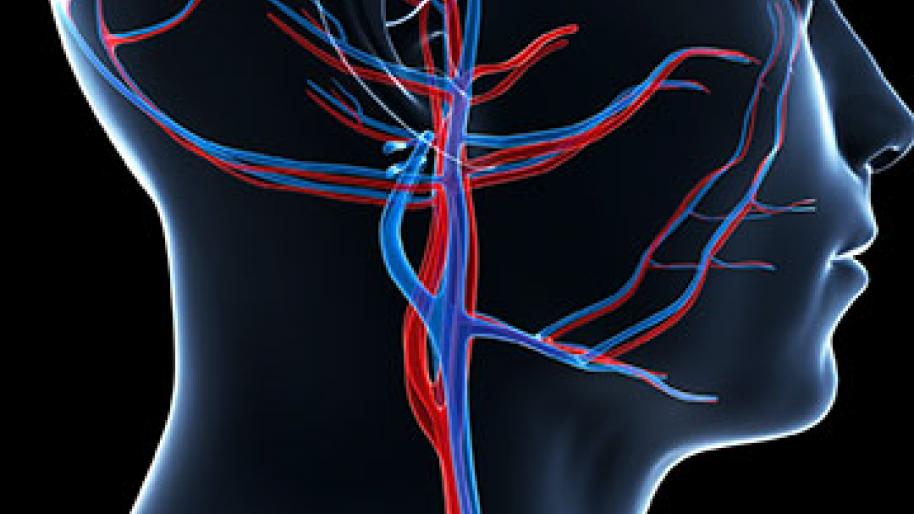Cerebrovascular disease refers to a group of conditions that affect blood flow and the blood vessels in the brain. Problems with blood flow may occur from blood vessels narrowing (stenosis), clot formation (thrombosis), artery blockage (embolism) or blood vessel rupture (hemorrhage). Lack of sufficient blood flow (also referred to as ischemia) affects brain tissue and may cause a stroke.
Cerebrovascular conditions include:
- Aneurysms
- Carotid stenosis or occlusion
- TIA and stroke
The most common risk factor for cerebrovascular disease is high blood pressure. Other risk factors include diabetes, high cholesterol, heart disease, smoking and excessive alcohol consumption.
Symptoms
Individuals with cerebrovascular disease may experience symptoms that include:
- Physical weakness and loss of balance
- Forgetfulness, confusion and difficulty carrying out activities that require planning and organization
- Difficulty following and engaging in conversation
- Difficulty reading, writing or speaking
Diagnosis
Testing for cerebrovascular disease includes:
- Doppler ultrasound: A noninvasive test in which ultrasound waves are used to reconstruct an image of the carotid arteries and the status of blood flow through the artery.
- MRI/MRA: Magnetic resonance imaging (MRI) and magnetic resonance angiogram (MRA) use magnetic fields to generate an image of the head and neck. These imaging techniques can reveal blockages.
- CTA-Angiography by CT: A type of imaging that helps determine the degree of narrowing and the amount of calcium in the vessel.
- Angiography: Performed using X-ray. Pictures are taken while medication is injected directly into the artery. The resulting angiogram is the most accurate way of looking at arteries in the neck, head and brain.
Treatment Options
Treatment options for cerebrovascular disease depend on the nature of the particular disease and its severity.
Carotid artery disease treatment options include:
- Carotid Endarterectomy (surgical treatment): One of the most commonly performed vascular operations, carotid endarterectomy is a safe and long-lasting treatment for carotid artery disease. The procedure involves the surgical removal of plaque that has built up on the inner lining of the carotid artery.
- Angioplasty & Stenting (endovascular treatment): A procedure in which a catheter-guided balloon is used to open a narrowed coronary artery. A stent (a wire-mesh tube that expands to hold the artery open) is usually placed at the narrowed section during angioplasty.
Cerebrovascular Treatment at the University of Michigan
The University of Michigan Compehensive Stroke Center includes a team of vascular surgeons, neurologists, and interventional neuroradiologists. The Section of Vascular Surgery is a national leader in research, open surgery and new endovascular procedures for carotid disease. Our team will formulate an individualized care plan for you that may include medical management, open surgical procedures, or endovascular procedures.
Clinical Research Opportunity for Carotid Artery Stenosis
Do you have carotid artery stenosis? Go to UMHealthResearch.org to learn about the CREST-2 study, a novel intensive medical management plan to treat your narrowed carotid artery. The plan targets multiple risk factors for carotid artery disease such as high blood pressure, high cholesterol, diabetes, and smoking cessation.
Make an Appointment
Visit our Make an Appointment page for more information.

